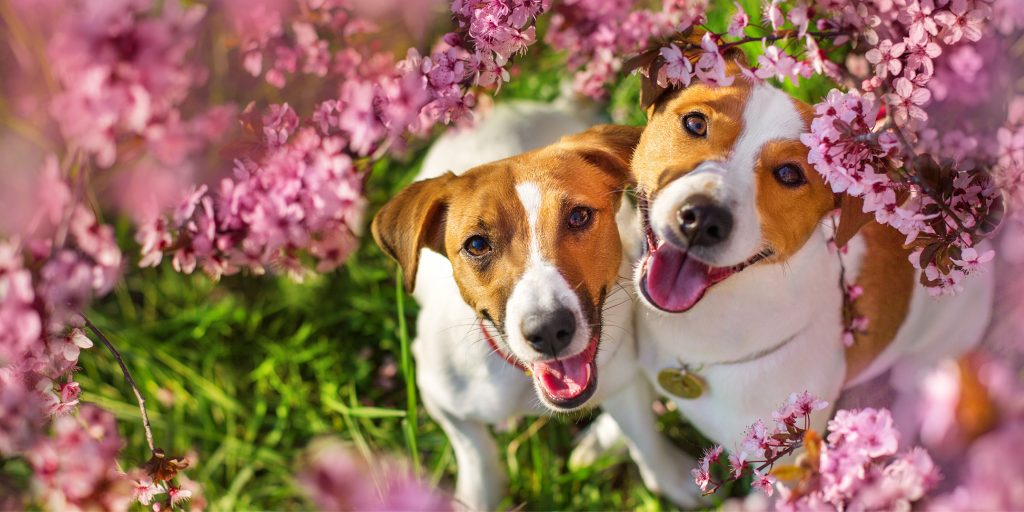Plants can be a wonderful addition to the home and garden. Not only do they help enhance the beauty of the home, but they can improve air quality, boost moods, and limit feelings of stress. Some of these beneficial plants can also affect our pet’s health in negative ways and in some situations may even be fatal.
Us humans typically don’t think about eating our plants and the consequences but unfortunately, licking, smelling, and tasting their surroundings is how our companions get familiar with new additions to their home. Even though some poisonous plants give off a pungent smell that deters our curious critters, we cannot rely on our pets to know what is dangerous and stay away from them, many are just too investigative to resist.
We don’t want you to worry! We are going over the common indoor and outdoor plants that are toxic to our pets, some safe and gorgeous alternatives, and what you should do if your beloved furry family members show signs of toxicity.
Poisonous Plants for Pets
We will go through different types of plants, flowers and bulbs, shrubs, trees, herbs, fruit & vegetables, and succulents, their identifiers, and their toxicity symptoms.
Garden Flowers & Bulbs
| Plant | Photo | Toxic Component | Details |
| Amaryllis | 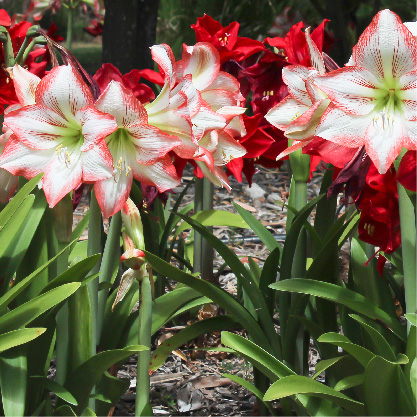 | Lycorine | o Like the above examples, they resemble lilies but are not close relatives. o They have large trumpet-shaped flowers that come in a variety of colours and can be two-toned and striped as well. o If consumed, it can result in excessive drooling, stomach pain, vomiting, diarrhea, tremors, and decreased appetite. |
| Autumn Crocus/ Colchicum |  | Colchicine | o They have cup-like blossoms that are pink or purple, typically white inside. o If ingested they can cause gastrointestinal bleeding, severe vomiting, kidney and liver damage, respiratory failure, bone marrow suppression, and shock. |
| Begonia |  | Calcium oxalate crystals | o Dark green or bronze leaves with single or double flowers of white, pink, red and bicolour. o If ingested they can cause intense burning of the mouth, throat lips and tongue. It comes with excessive drooling, swelling of the throat and difficulty swallowing. |
| Chrysanthemum |  | Lactones, sesquiterpene, pyrethrins, and other potential irritants. | o The flowers have varying petal arrangements from daisy-like to pompoms and can range in colour from white and yellow to deep burgundies and purples. o When consumed you may see vomiting, diarrhea, excessive drooling, loss of coordination and dermatitis may develop with skin contact. |
| Cyclamen |  | Saponins | o They have dark green leaves with white veins or blotches and solitary flowers of pink, white, red, and purple. o If ingested, it can cause vomiting, diarrhea, excessive drooling, abnormal heart rhythms, seizures and even death. |
| Daffodil |  | Lycorine and other alkaloids. | o They are identified as a single flower on a green stalk, usually yellow or white petals surrounding a trumpet. o The petals, bulbs, and even the water in the vase is toxic. o They may experience excessive drooling, vomiting, diarrhea, respiratory distress, low blood pressure, convulsions, and irregular heart rhythms. |
| Foxglove | 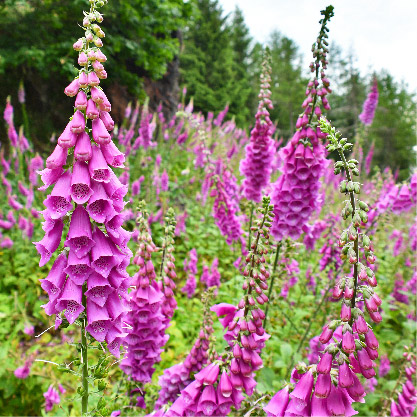 | Digitalis and other cardiac glycosides | o It is a pinkish purple, funnel-shaped flowers that can grow up to 2m tall. o All parts of the plant or toxic from the seeds to the petals. o You may see frequent urination, excessive drooling, vomiting, diarrhea, weakness, cardiac failure and may even result in death. |
| Geranium | 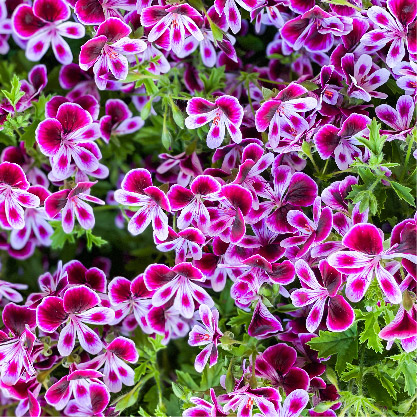 | Geraniol and linalool | o It’s identified by its fragrance, green leaves, and rose-coloured flowers. Flowers may be bicoloured. o Ingestion can cause lethargy, low blood pressure, loss of appetite and skin contact can result in skin rashes. |
| Hyacinth |  | Lactones and other alkaloids | o A plant with a lot of small flowers grouped together closely around the stem. Usually blue, white, or pink. o The whole plant is toxic, but the bulbs are the most concentrated. o It can cause irritation of the mouth and esophagus, intense vomiting and diarrhea, difficulty breathing, increased heart rate and tremors. |
| Iris | 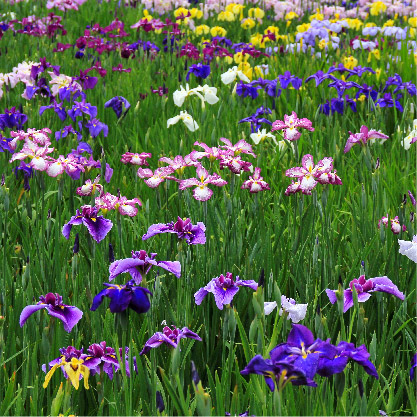 | Irisin | o Has radiant, upright six-pedaled flowers. Traditionally purple but can be seen in a variety of vibrant colours. o Ingesting any part of the plant can cause excessive drooling, vomiting, diarrhea, and lethargy. Direct contact with skin can result in skin rashes. |
| Lenten Rose |  | Saponins and glycosides | o Most known for rich green foliage and cup like flowers with light yellow-green to red petals. o When ingested it can cause colic, depression, diarrhea, vomiting, breathing difficulties, seizures, heart arrhythmia, and even death. |
| Lily | 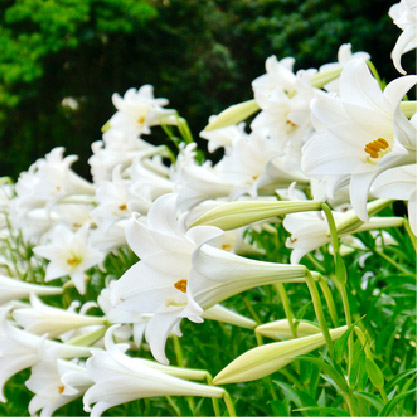 | Calcium oxalate crystals | o Normally feature six petal-like segments that can appear on a variety of shapes and colours. o The petals, stems, and even the water in the vase is toxic. o Toxicity symptoms can become quite serious from excessive drooling, loss of appetite and vomiting to lethargy, and kidney failure. o There are so many different varieties with some being much more toxic than others, but it is best to stay away from them all. |
| Day Lilies |  | Calcium oxalate crystals | o They are similar to lilies, but stems are shorter, and flowers normally grow from a grass-like foliage at ground level. o These are extremely toxic for cats with similar symptoms to lilies, and it typically only causes gastrointestinal upset in dogs. |
| Calla Lilies |  | Calcium oxalate crystals | o The plant has tall stems and tubular shaped flowers with pointed tips and finger-like spadix at the center. o Symptoms are like lily poisoning and can range from mild to severe. They also release a substance that burns and irritates the mouth and stomach. |
| Lily of the Valley | 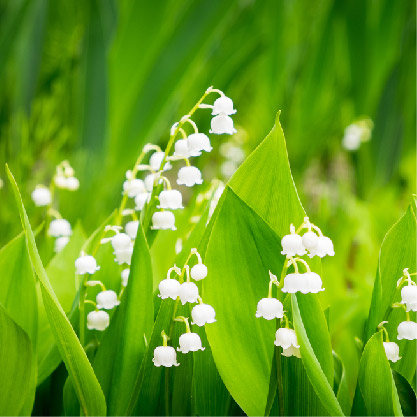 | Cardiac glycosides | o Identified by its nodding white bell-shaped flowers that cluster on a leafless stalk. o They may experience diarrhea, vomiting, a drop-in heart rate, and cardiac arrhythmia. |
| Tulips |  | Tulipalin A and B | o Best known for long, broad, parallel leaves and cup shaped flowers that can be found in a wide range of colours. o The whole plant is poisonous, but it is most concentrated in the bulbs. o They can cause irritation of the mouth and esophagus, vomiting, excessive drooling, diarrhea, depression, and in severe cases, increased heart rate and irregular breathing. |
Shrubs
| Plant | Photo | Toxic Component | Details |
| Azaleas & Rhododendrons | 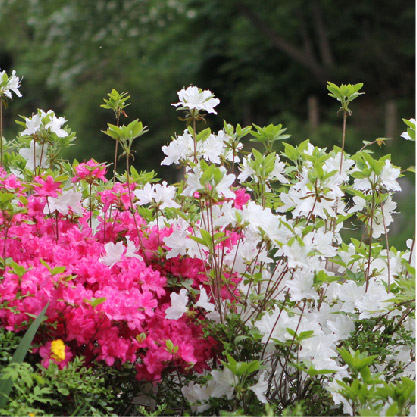 | Grayanotoxin | o Azaleas have funnel-liked flowers, one flower per stem. The plant is so filled with stems it appears to be covered in the flowers. o Rhododendrons have bell-shaped flowers that grow in clusters and have fewer stout stems. o Entire genus is extremely dangerous, just a few leaves can cause serious issues. o When eaten, both can cause vomiting, diarrhea, weakness, paralysis, cardiac failure and even death. |
| Castor Bean |  | ricin | o Toxic component: ricin. o It can have glossy green leaves, black and purple, or a metallic red with white veins. Flowers are bright red with feathery branches. o When consumed it can cause severe abdominal pain, vomiting, diarrhea, increased thirst, seizures, coma, and even death. |
| Dahlia |  | Phototoxic polyacetylene | o They are bushy plants with big, gorgeous flowers that come in every colour of the rainbow. o They can cause skin irritation, sensitivity to the sun, vomiting, and diarrhea. |
| Holly |  | Saponin | o The varieties range in toxicity, though it is best to avoid them all. o The have dark green leaves, spikes, and bright red berries. o They may experience excessive drooling, head shaking, irritation of the mouth, vomiting, diarrhea, and the spikey leaves can cause gastrointestinal injury. |
| Hydrangea |  | Cyanogenic glycosides | o They are shrubs with flowers in round or umbrella-shaped clusters which colours range from white, pink, blue and purple based on the acidity of the soil. o All parts of the plant are toxic, but it is most concentrated in the leaves and flowers. o If eaten, pets may experience excessive drooling, lethargy, vomiting, and diarrhea. |
| Ivy |  | Saponins and calcium oxalate crystals | o It is a vine rather than a shrub but is used frequently in landscaping. o Can cause irritation and burning of mouth, throat, tongue, and lips. Excessive drooling, vomiting, diarrhea, and difficulty breathing and swallowing may also occur. |
| Oleander |  | Cardiac glycosides | o They have long, narrow, dark green leaves. Their showy flowers are funnel-shaped and appear in clusters that range from white and peach to deep burgundy. o All parts of the plant are toxic. o Ingestion can cause extreme vomiting, abnormal heart rate, seizures, hypothermia and even death. |
| Peony |  | Paeonol | o They have green leaves and flowers with fluffy petals that creates a full sphere in a variety of colours. o If ingested in large amounts it can cause vomiting, diarrhea, weakness, and lethargy. |
| Umbrella Plant |  | Calcium oxalate crystals | o They have long, green, oval-shaped leaves that droop down resembling an umbrella. o If our pets were to consume it, it can result is burning and irritation of the mouth, lips and tongue, drooling, vomiting, and difficulty swallowing. |
| Verbena Shrub |  | Triterpenoid | o The leaves are simple while the five-petaled flowers are small and clustered into a spike. o The berries are the most concentrated, but the whole plant is toxic. o Ingestion can cause vomiting, diarrhea, loss of appetite, excessive urination, jaundice, and liver damage. |
| Wisteria | 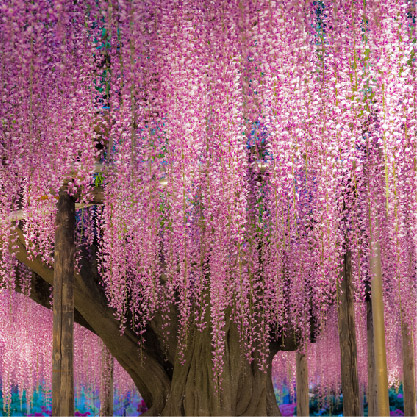 | Lectin, wisterin glycosides | o It is a climbing shrub with pendants of scented flowers, typically blue or violet. o If eaten it can cause a burning mouth sensation, abdominal pain, vomiting, diarrhea, and depression. |
Trees
| Plant | Photo | Toxic Component | Details |
| Cherry, Plum, Apricot, Peach, Apple, and Avocado Tree |  | Cyanogenic glycosides | o The pits and seeds are a choking hazard. o Our pets are finding the fruit once already fallen to the ground. o Ingestion can cause vomiting, diarrhea, abdominal pain, trouble breathing, seizures, and cardiac arrest. |
| Chinaberry Tree |  | Melia toxins A and B | o It is a multibranched tree with dark brown bark and lacy, dark green leaves. o Bark, leaves, berries, and flowers are all toxic. o It may cause vomiting, diarrhea, weakness, lowered heart rate, shock, and seizures. |
| Buckeye (Horse Chestnut) Tree |  | Saponin and glycosides | o It has a rounded canopy and dark grey, thick bark and they have shiny, mahogany nuts with an eye at one end. o Ingestion can result in vomiting, diarrhea, dilated pupils, seizures, and even a coma. |
| Eucalyptus |  | Eucalyptol | o Many varieties and can be classified as a tree or shrub. o It is popular for its mind-soothing fragrance. o If enough leaves are ingested, the pet may experience excessive drooling, vomiting, decreased appetite and diarrhea. |
| Walnut, Pecan, Hickory & Macadamia Nut Tree |  | Juglone | o The tree itself is not dangerous, but the nuts that fall to the ground are. o The nuts also decay very quickly and produce mold. o Eating the nuts can cause our pets to experience vomiting, diarrhea, abdominal pain, and seizures. |
| Yew Tree | 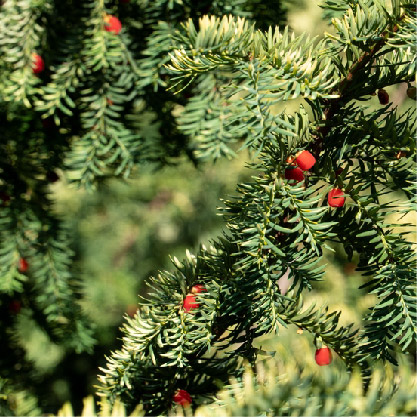 | Taxines | o All varieties are toxic. o They are best known as a popular holiday decoration with bright green leaves and red berries. o They can cause vomiting, tremors, difficulty breathing and seizures. |
Herbs, Fruit & Vegetables
| Plant | Photo | Toxic Component | Details |
| Marijuana | 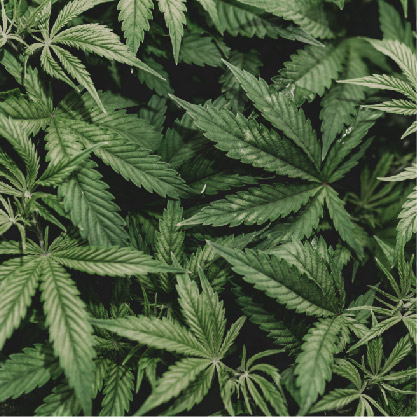 | Tetrahydrocannabinol (THC) | o Their stems are thin with thin green leaves and usually have five to seven branches. Their flowers are small, green and grow in clusters. o Ingestion by our pets can cause depression of the central nervous system resulting in loss of coordination, vomiting, diarrhea, increased heart rate and seizures. |
| Onion | 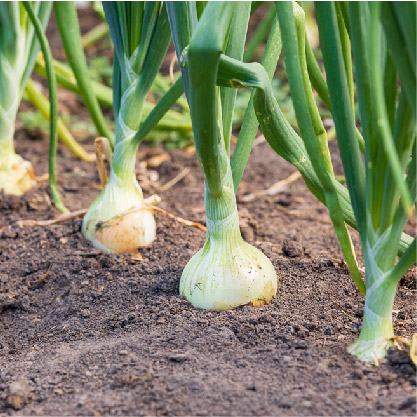 | Disulfides | o All varieties are toxic, including chives. o If our pets ingest a large amount, whether over time or all at once, they can damage their red blood cells, causing anemia. |
| Parsley | 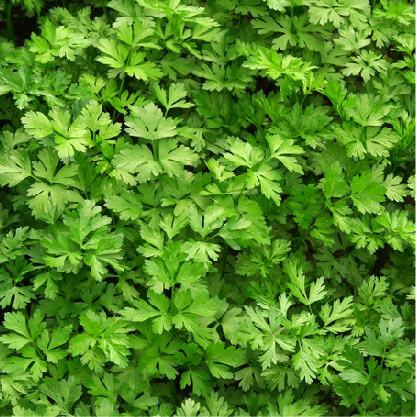 | Furanocoumarins | o An herb grown for its flavourful and has dark green leaves. o If consumed in large quantities, or consistently over a longer period, it can cause photosensitization, making them more susceptible to sun damage and sun burns. |
| Tomato |  | Solanine | o Their green vine and unripen fruit can cause toxicity symptoms. o When eaten it can cause drooling, loss of appetite, dilated pupils, vomiting, diarrhea, and a slowed heart rate. |
Succulents & Other Houseplants
| Plant | Photo | Toxic Component | Details |
| Aloe Vera |  | Saponins and anthraquinones | o The gel itself is safe but the thick, spikey, plant material surrounding it can cause toxicity symptoms. o Ingestion of the plant can cause swelling of the throat, lethargy, vomiting, diarrhea, and severe abdominal pain. |
| Birds of Paradise |  | Tannins and hydrocyanic acid | o Leaves are paddle-shaped attached to an upright stalk, and they have boldly coloured blooms that resemble birds in flight. o Ingestion can cause eye discharge, vomiting, diarrhea, and laboured breathing. |
| Chandelier Plant |  | Cardiac glycosides | o They have grey-green foliage with brown-red spots and dangling orange flowers in clusters. o If eaten it can cause vomiting, diarrhea, drooling and abnormal heart rate. |
| Dumbcane |  | Calcium oxalate crystals and proteolytic enzymes | o All varieties are toxic. o They are resilient and easy to care for, can grow up to 6 feet tall and have big bushy leaves that are yellow at the vein and turn to darker green as it spreads outward. o It will cause irritation and intense burning of the mouth, tongue and lips, excessive drooling, difficulty swallowing, and vomiting. |
| Elephant’s Ear | 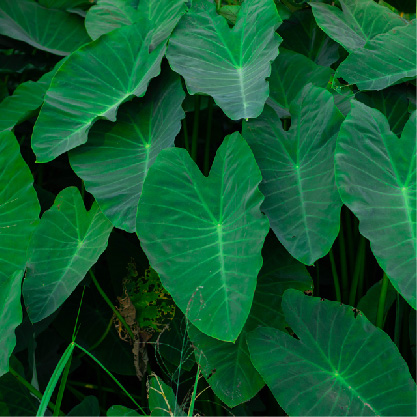 | Calcium oxalate crystals | o These house plants are well liked as they are easy to care for and have big leaves with bold vein patterns. o When eaten it can lead to excessive drooling, swollen tongue, eyes and lips, vomiting, diarrhea, and kidney failure. |
| Ficus |  | Ficin | o The toxin is incorporated in the sap, all parts of the plant are toxic. o Ingestion of the plant will cause mouth pain, drooling, diarrhea, vomiting and loss of appetite. o Contact with the skin can cause irritation and sensitivity to the sun. |
| Jade |  | Saponins | o Their fleshy leaves can be round or oval and can be dark green, grey-blue or edged in red. Mature plants will flower in the winter. o If ingested it can cause vomiting, loss of coordination, difficulty breathing, depression, and seizures. |
| Moss Rose | 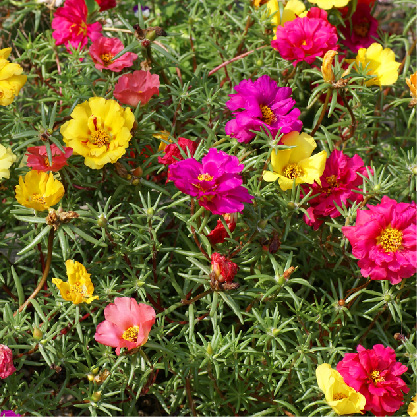 | Calcium oxalate crystals | o Its green leaves are fleshy and narrow while its five-petaled flowers come in red, orange, yellow, white, and other pastel colours. o If ingested it can lead to drooling, vomiting, diarrhea, tremors, kidney failure and even death. |
| Poinsettia |  | Saponins | o Usually seen around the holidays with dark green leaves with coloured bracts ranging in red, pink, and white. o It can lead to vomiting, diarrhea, excessive drooling, eye irritation and skin irritation. |
| Sago Palm |  | Cycasin | o Every part is extremely toxic especially the seeds. o They have dark green feather-like leaves resembling a miniature palm tree, with red and orange oval-shaped seeds. o They may experience vomiting, diarrhea, loss of appetite, nosebleeds, liver damage and may even lead to death. |
| Snake Plant |  | Saponins | o They have sharply pointed, sword-like leaves that are dark green with light grey-green stripes. o If chewed on or ingested it can cause vomiting and diarrhea, swollen mouth and throat, lethargy, and loss of appetite. |
| ZZ Plant |  | Calcium oxalate crystals | o They have rich green, wand-shaped stems with fleshy, oval-shaped leaves. o It can cause swelling of the eyes, irritation of the skin and mucous membranes, vomiting, diarrhea, and abdominal pain. |
Safe Plants for Pets
| Plant | Details |
| African Daisy | o A great alternative to moss rose. o They prefer lots of sun and weekly watering. o Flower consists of showy outer petals in bright colours and a compact eye in the center. |
| African Violet | o A great alternative for chrysanthemums. o Bloom beautifully when in indirect sunlight. o They are compact plants with dark green, thick leaves and violet-like flowers. |
| Baby Tears | o Needs plenty of water and filtered light. o A dense, delicate mat of fine round, or bean-shaped leaves. |
| Basil, Rosemary, Cilantro & Thyme | o Love direct light and lots of water. o Basil has rounded, slightly cupped, green leaves. Has a sweet, pungent, slightly spicy flavour. o Rosemary repels mosquitoes like eucalyptus. Is a fragrant shrub with needle-like leaves. Has notes of evergreen, citrus, lavender, pine, sage, pepper, and mint. o Cilantro is a great substitute for parsley. Looks like parsley with its delicate, bright green leaves. o Thyme is a shrub with slender, wiry, spreading leaves. Has an earthy, minty, and slightly lemony flavour. |
| Bird’s Nest Fern | o Thrive in low light and varying humidity, like in bathrooms. o Known for its unique squiggly, green fronds. |
| Boston Fern | o They like cool spots with indirect sunlight and high humidity. o Has tight clumped, arching, feather-like fronds that are typically pale green. |
| Bromeliad | o Require plenty of air flow and indirect sunlight. o They have multicoloured leave sin red, green, purple, orange, and yellow. |
| Calathea Orbifolia | o Fantastic replacement for elephant’s ear. o Requires partial shade and regular watering. o It has beautiful, large, round leaves striped with pale silver-green. |
| Camellias | o A colourful replacement for azaleas and tulips. o Plant in an area that has sun in the morning, shade at night. o They are small shrubs with glossy green leaves and large flowers with many overlapping petals of white, yellow, pink, or red. |
| Chinese Money Plant | o A great replacement for Devil’s Ivy. o Prefer indirect sunlight in a warm spot, with regular watering. o Green shoots grow up ending in a single saucer-shaped leaf. |
| Date Palm | o Do not over water and keep in bright, indirect sunlight. o Has a crown of graceful green pinnate leaves. |
| Freesia | o A fantastic replacement for daffodils. o They prefer full sun and regular watering. o They have a sweet-spicy fragrance and can come in a variety of colours and bicolour patterns. Their funnel-shaped flowers grow in dense clusters on the slender stems. |
| Friendship Plant | o Prefers moderate to bright, indirect sunlight and thorough watering. o They have deeply textured, rich green leaves with bronze-silver veins. |
| Gloxinia | o They thrive in bright rooms with indirect sunlight. o Flowers come in bright shades of purple, pink, red, or blue. |
| Haworthia Retusa | o Great alternative for a jade plant. o Forms star-shaped rosettes with its fleshy leaves. o Prefers indirect sunlight and little watering. |
| Orchid | o Great alternative to lilies and amaryllis. o Do best in indirect light and warmer, more humid rooms. o They have wide-spreading, broad, flat petals that can come in a variety of colours. |
| Parlor Palm | o Great alternative for sago palm. o Slow growers that prefer indirect sunlight. o A single-trunk palm with arching green leaves comprised of narrow leaflets. |
| Petunias | o Terrific replacement for Wisteria. o Require regular watering and to be in full sun. o They have funnel-shaped flowers of five petals, come in a variety of colours and patterns. |
| Polka Dot Plant | o They need bright, indirect sunlight and moderate amount of watering, o Normally oval-shaped leaves with pink base colour and green spots but can be seen in a variety of spotted patterns. |
| Ponytail Palm | o Easy to care for and do not need much water. o Long green, feathery leaves drape down from the stem, resembling a ponytail. |
| Prayer Plant | o Great replacement for dumbcane. o Prefers bright, indirect sunlight and little watering. o Leaves are pale green to purple-green and fold at night to resemble praying hands. |
| Rattlesnake Plant | o Large, green, oval-shaped leaves with a plum-purple underside. o Best if placed away from direct light. |
| Snapdragon | o A great alternative to hyacinths. o They prefer full sun but will tolerate partial shade. o They have tubular flowers that come in a variety of colours from pastels to brights. |
| Spider Plant | o Fantastic replacement for a snake plant. o Incredibly resilient and are great air purifiers. o Long leaves that are either solid green or have a lengthwise stipe of white or yellow. |
| Staghorn Fern | o Can thrive in both direct and indirect sunlight with little watering. o Its fronds are meant to resemble split antlers from a deer or elk. |
| Venus Flytrap | o Considered low maintenance, needs a few hours of direct sunlight. o Each leaf has a flat stalk that ends with a trap, the trap has a reddish centre lined with teeth. |
| Watermelon Peperomia | o Like to be kept out of direct sunlight and do not need much watering. o Named due to the shape and colour of its leaves resembling a watermelon rind. |
| Zebra Plant | o Fantastic alternative for aloe vera. o They like direct sunlight and light watering. o They have dark green leaves with distinctive zebra-like stripes. |
| Zinnias | o A fantastic replacement for hydrangeas. o They prefer full sun exposure and regular watering. o They have stiff green stems and bountiful flowers, can be in any colour but blue. |
My Pet Ate a Toxic Plant – What do I do?
The most common mistake pet parents make is waiting to see if the pet becomes ill before contacting their veterinarian. It is always better to be safe rather than sorry. If you believe your pet has eaten a possibly poisonous plant, please follow the below steps.
- Try to identify the plant as best you can. Take photos, a sample or sample of any vomit from the pet.
- Contact your veterinarian.
- Provide as much information as possible such as: the suspected plant and time of ingestion, the pet’s age and weight, and any symptoms they are experiencing.
- Contact Pet Poison Helpline. (Veterinarian may call on your behalf)
- Provide as much information as possible such as: the suspected plant and time of ingestion, the pet’s age and weight, and any symptoms they are experiencing.
- Do not induce vomiting unless instructed to do so by the veterinarian. Specific poisons require specific treatment, vomiting can make some cases worse.
We hope with this list, pet parents can feel more confident and comfortable with the plants they bring into the home and garden. We can still enjoy plants and their benefits while also making sure our pets can enjoy them too. We all love our curious critters and do all we can to keep them happy and healthy. Keep up the great work!
Marketing Lead, Customer Engagement

